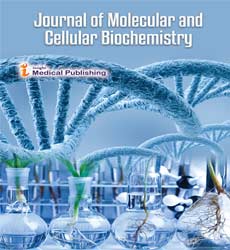Mechanism of DNA Repair System
Mike Hawkins*
Department of Biochemistry, University of Lagos, Lagos, Nigeria
- *Corresponding Author:
- Mike Hawkins
Department of Biochemistry,
University of Lagos,
Lagos,
Nigeria
E-mail: mike.hawkins2010@port.ng
Received Date: November 04, 2021; Accepted Date: November 18, 2021; Published Date: November 25, 2021
Citation: Hawkins M (2021) Mechanism of DNA Repair System. J Mol Cell Biochem Vol.5 No.5:010.
Description
The preservation of genetic sequence information in living organisms is critical for life's survival. At the same time, mutagenesis is critical to its survival and evolution, while also contributing to cancer, some human diseases, and aging. DNA, the basic unit of inheritance, is known to be an innately reactive molecule that is highly vulnerable to chemical changes by both endogenous and external agents. DNA repair refers to the methods through which a cell detects and repairs damage to the DNA molecules that encode its genome. Normal metabolic activities, as well as environmental influences such as radiation, can induce DNA damage in human cells, resulting in tens of thousands of unique molecular lesions per cell every day. Both prokaryotic and eukaryotic organisms contain DNA repair pathways, and many of the proteins involved have been highly conserved throughout evolution.
Cells, in reality, have evolved a multitude of methods to identify and repair the numerous types of DNA damage that might occur, regardless of whether the damage is generated by the environment or by replication errors. Because DNA is a substance that performs an active and vital function in cell division, DNA repair regulation is inextricably linked to cell cycle regulation. Cells go through a cycle that includes the G1, S, G2, and M phases, with DNA replication taking place in the S phase and mitosis taking place in the M phase. Checkpoint processes ensure that a cell's DNA remains intact during the cell cycle before allowing DNA replication and cell division to proceed. Failures at these checkpoints can result in a build-up of harm, which can lead to mutations. Exposure to UV radiation activates one of the main DNA Damage Responses (DDR).
Solar UV radiation is classified into three types, with only UV-A and UV-B capable of penetrating the Earth's atmosphere. As a result, these two forms of UV radiation are the most concern to humans, especially as the ozone layer continues to deplete, causing larger levels of this radiation to reach the planet's surface. NER and photo reactivation aren't the only ways to repair DNA. For example, Base Excision Repair (BER) is the most common process for dealing with spontaneous DNA damage induced by free radicals and other reactive species produced by metabolism. Interactions with these agents can cause bases to be oxidised, alkylated, or hydrolysed. For example, 7- methylguanine is typically formed by adding methyl (CH3) chemical groups to guanine; alternatively, purine groups may be removed. All of these modifications result in aberrant bases that must be removed and replaced.
As a result, DNA glycosylase enzymes literally cut damaged bases out of the DNA strand by cleaving the covalent connections between the bases and the sugar-phosphate backbone. A specific repair polymerase subsequently fills the resultant gap, which is then shut by ligase. Cells contain a plethora of such enzymes, each of which is unique to different sorts of base changes. Our genetic code is subjected to a slew of assaults that affect its integrity. However, a stringent system of checks and balances is in place via the DNA repair machinery. Errors that slip through the gaps are sometimes linked to disease, but they are also a source of variation that is influenced by longer-term processes like evolution and natural selection is as well as replaced.
Open Access Journals
- Aquaculture & Veterinary Science
- Chemistry & Chemical Sciences
- Clinical Sciences
- Engineering
- General Science
- Genetics & Molecular Biology
- Health Care & Nursing
- Immunology & Microbiology
- Materials Science
- Mathematics & Physics
- Medical Sciences
- Neurology & Psychiatry
- Oncology & Cancer Science
- Pharmaceutical Sciences
